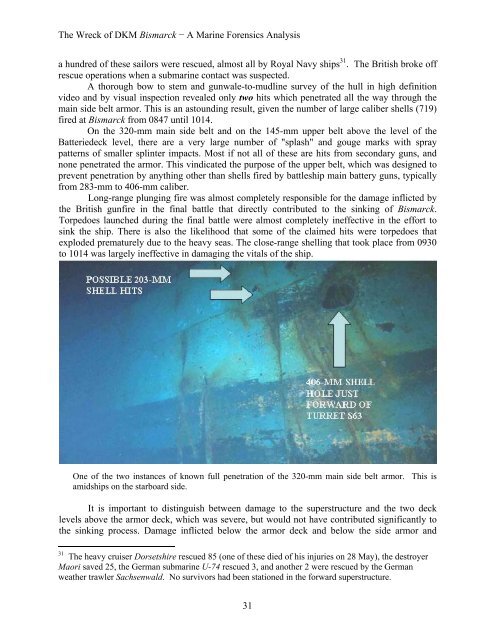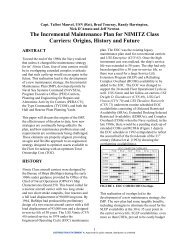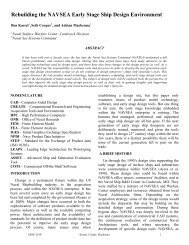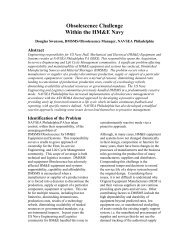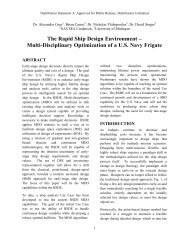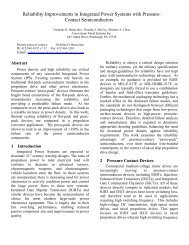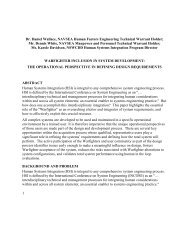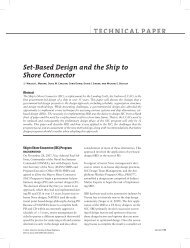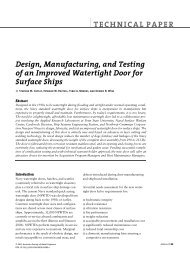The Wreck of DKM Bismarck − A Marine Forensics Analysis 1 The ...
The Wreck of DKM Bismarck − A Marine Forensics Analysis 1 The ...
The Wreck of DKM Bismarck − A Marine Forensics Analysis 1 The ...
You also want an ePaper? Increase the reach of your titles
YUMPU automatically turns print PDFs into web optimized ePapers that Google loves.
<strong>The</strong> <strong>Wreck</strong> <strong>of</strong> <strong>DKM</strong> <strong>Bismarck</strong> <strong>−</strong> A <strong>Marine</strong> <strong>Forensics</strong> <strong>Analysis</strong><br />
a hundred <strong>of</strong> these sailors were rescued, almost all by Royal Navy ships 31 . <strong>The</strong> British broke <strong>of</strong>f<br />
rescue operations when a submarine contact was suspected.<br />
A thorough bow to stem and gunwale-to-mudline survey <strong>of</strong> the hull in high definition<br />
video and by visual inspection revealed only two hits which penetrated all the way through the<br />
main side belt armor. This is an astounding result, given the number <strong>of</strong> large caliber shells (719)<br />
fired at <strong>Bismarck</strong> from 0847 until 1014.<br />
On the 320-mm main side belt and on the 145-mm upper belt above the level <strong>of</strong> the<br />
Batteriedeck level, there are a very large number <strong>of</strong> "splash" and gouge marks with spray<br />
patterns <strong>of</strong> smaller splinter impacts. Most if not all <strong>of</strong> these are hits from secondary guns, and<br />
none penetrated the armor. This vindicated the purpose <strong>of</strong> the upper belt, which was designed to<br />
prevent penetration by anything other than shells fired by battleship main battery guns, typically<br />
from 283-mm to 406-mm caliber.<br />
Long-range plunging fire was almost completely responsible for the damage inflicted by<br />
the British gunfire in the final battle that directly contributed to the sinking <strong>of</strong> <strong>Bismarck</strong>.<br />
Torpedoes launched during the final battle were almost completely ineffective in the effort to<br />
sink the ship. <strong>The</strong>re is also the likelihood that some <strong>of</strong> the claimed hits were torpedoes that<br />
exploded prematurely due to the heavy seas. <strong>The</strong> close-range shelling that took place from 0930<br />
to 1014 was largely ineffective in damaging the vitals <strong>of</strong> the ship.<br />
One <strong>of</strong> the two instances <strong>of</strong> known full penetration <strong>of</strong> the 320-mm main side belt armor. This is<br />
amidships on the starboard side.<br />
It is important to distinguish between damage to the superstructure and the two deck<br />
levels above the armor deck, which was severe, but would not have contributed significantly to<br />
the sinking process. Damage inflicted below the armor deck and below the side armor and<br />
31 <strong>The</strong> heavy cruiser Dorsetshire rescued 85 (one <strong>of</strong> these died <strong>of</strong> his injuries on 28 May), the destroyer<br />
Maori saved 25, the German submarine U-74 rescued 3, and another 2 were rescued by the German<br />
weather trawler Sachsenwald. No survivors had been stationed in the forward superstructure.<br />
31


